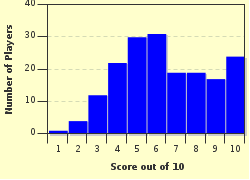Quiz Answer Key and Fun Facts
1. Charles Darwin's theory of evolution drastically changed our view of the world. He based his theory largely on evidence he saw and collected during a five week visit to a group of volcanic islands in the Pacific Ocean in 1831. Name those islands.
2. Prior to a 5 year ship voyage that included the legendary visit to the Pacific islands, Charles Darwin stopped his studies to become a priest. What other areas of study did he never complete?
3. Darwin's oceanic voyage took place on the HMS Beagle, a ship commissioned to survey the coast of South America. How long was the voyage?
4. What was the purpose of Darwin's presence on the HMS Beagle?
5. Why did the HMS Beagle make a stop on the Galapagos Islands?
6. True or False: Darwin formulated the bulk of his theory of evolution while on the Galapagos Islands. While observing the animal and plant life of the islands, it became immediately clear to him that only evolution could explain what he was seeing.
7. Darwin collected various specimens of birds while on Galapagos, as well as having a multitude of sketches and notes. While he thought he had several different species of birds, it wasn't until a few years later that a bird specialist examined Darwin's evidence and concluded that all the birds were different species of finches and each species was isolated on its own island. What was it about the finches that became intriguing to Darwin?
8. Charles Darwin married Emma Wedgewood in 1839. A very religious woman, she feared her husband's salvation was in jeopardy due to the ideas he had begun to theorize. How did Charles and Emma meet?
9. Twenty years after his time on Galapagos, Darwin hastily wrote, "On The Origin of Species By Means of Natural Selection," when young biologist Alfred Russell Wallace sent his own independently-reached theory to Darwin for review. To Darwin's horror, Wallace's theory mirrored his own. In 1859, how was the theory of natural selection received by Darwin's peers and the general public?
10. Within just a few years after his time at the Galapagos Islands, Darwin lived the majority of the rest of his life as a recluse, preferring isolation over large crowds and preferring time with his family and close colleagues over just about anything else. True or False: According to today's standards, it is currently felt that Darwin suffered from mental illness for most of his teenage years and throughout his adult life.
Source: Author
Pangea250
This quiz was reviewed by FunTrivia editor
bloomsby before going online.
Any errors found in FunTrivia content are routinely corrected through our feedback system.

